
By the midpoint of the Summer of Love, it was clear that the world beyond the confines of popular music was about anything but love. The escalation of the Vietnam War and US involvement in it had led to early predictions in ’67 about the war’s impending end, but these proved to be optimistic. The race riots that had gripped various parts of the US so far that summer were spreading. Music and the counterculture would respond in their own way, but it was evident that they weren’t going to change the world, at least not with love alone. (Although in fairness, Simon & Garfunkel had realized that about a year earlier.)
Pink Floyd’s summer debut The Piper At The Gates Of Dawn established the Floyd as pioneers of, variously, psychedelic rock, “space rock”, art rock, progressive rock… the list goes on. Despite being a fan for years, I admit that I’ve never been terribly inclined to search for 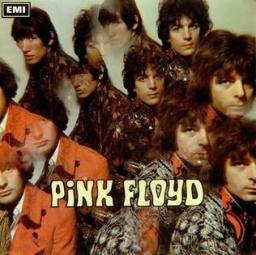 deeper meaning in their early work, and Piper is no exception; however, it’s fantastic trance music, in snatches almost offering up one or two vaguely pop-ish tunes aimed at wide consumption, but overall aiming for a soundscape-as-song vibe. Simultaneously with the Velvet Underground, Pink Floyd experimented with rudimentary light shows and performance art touches that set the scene for the massive, prop-laden stage productions that would later become their trademark, and in the Seventies propel the rock show from mostly auditory medium to visual tour de force.
deeper meaning in their early work, and Piper is no exception; however, it’s fantastic trance music, in snatches almost offering up one or two vaguely pop-ish tunes aimed at wide consumption, but overall aiming for a soundscape-as-song vibe. Simultaneously with the Velvet Underground, Pink Floyd experimented with rudimentary light shows and performance art touches that set the scene for the massive, prop-laden stage productions that would later become their trademark, and in the Seventies propel the rock show from mostly auditory medium to visual tour de force.
When I started this blog, my awareness of Vanilla Fudge was limited to an offhand reference to their presence in Seattle at the time of Led Zeppelin’s Shark Incident a couple of years later. However, their debut managed to string together an eclectic collection of covers and nursery rhyme snippets, slow them down, stretch them out, infuse them liberally with electric organ courtesy of Mark Stein (soon to serve as an inspiration to Deep Purple’s Jon Lord), and in the process create another great example of trance music. Meanwhile, Big Brother and the Holding Company dropped their eponymous debut in August, fresh off their appearance at Monterey Pop. While highlighting Janis Joplin’s unique vocal stylings, the album didn’t make much of a popular dent, but issued one of her self-penned odes to the women’s rights movement (“Women Is Losers”).
At the same time, folk/rock got a double boost, from Tim Buckley and Joan Baez respectively. Buckley’s soaring pipes kicked off his second album Goodbye and Hello with his blistering plea for peace in “No Man Can Find The War” and strongly suggested something Led Zeppelin were listening to around 1969 (“I Never Asked To Be Your Mountain”). The title track picks up where Jefferson Airplane left off in “Plastic Fantastic Lover” but then morphs into a grand cultural indictment, with the king and queen in their castle of billboards heading off to “worship the electronic shrine”, while Freedom and Violence, the acrobat clowns, do “a balancing act on the graves of our sons, while the tapdancing Emperor sings ‘war is peace’.” Veteran Baez released Joan, comprised primarily of covers but including the despairing anti-Vietnam War anthem “Saigon Bride”, in which she speaks to the titular character as an American GI, observing that while some say the tide of the war is yellow and others red, “it will not matter when we’re dead.” Clearly the movement was coalescing around a grittier message as the war descended deeper into quagmire, and around acceptance of the inability of simple pleas for love and peace to stop the descent.
There’s nothing wrong with an artist wanting to provide at least some context to their work; it is their creation, and a more obscure or ambiguous work can benefit from such 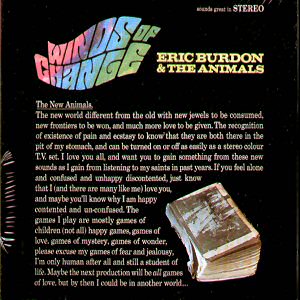 explanation and broaden its popular appeal. But it’s certainly possible to take this too far; on Winds Of Change, Eric Burdon and the (re-tooled) Animals sought almost to create by blunt force a statement of the times, with Burdon’s preachy message on the cover setting out his apparent midlife crisis at the ripe old age of 26. The title track traced, as Burdon had done in 1964, the ancestry of rock, this time laden with the era’s obligatory sitar effects, while endeavouring on “Yes I Am Experienced” to answer the question posed by the Jimi Hendrix Experience’s debut a few months earlier. Overall, there’s a sense of just plain grasping too fervently for relevance and profundity, and with insufficient subtlety: when you feel the need to explicitly warn the listener that they may not be able to understand “San Franciscan Nights” without actually being there, well… you might be suffering from an overblown sense of self-importance.
explanation and broaden its popular appeal. But it’s certainly possible to take this too far; on Winds Of Change, Eric Burdon and the (re-tooled) Animals sought almost to create by blunt force a statement of the times, with Burdon’s preachy message on the cover setting out his apparent midlife crisis at the ripe old age of 26. The title track traced, as Burdon had done in 1964, the ancestry of rock, this time laden with the era’s obligatory sitar effects, while endeavouring on “Yes I Am Experienced” to answer the question posed by the Jimi Hendrix Experience’s debut a few months earlier. Overall, there’s a sense of just plain grasping too fervently for relevance and profundity, and with insufficient subtlety: when you feel the need to explicitly warn the listener that they may not be able to understand “San Franciscan Nights” without actually being there, well… you might be suffering from an overblown sense of self-importance.
Progressive rock emerged as the product of psychedelia mixed with a desire to tackle more sweeping or complex subject matter in the musical form. Procol Harum’s trail-blazing foundational prog rock self-titled debut, coming hot on the heels of their legendary hit single “A Whiter Shade Of Pale”, represented a step forward in terms of thematic complexity. Tracks like “Something Followed Me”, “A Christmas Camel” featuring a 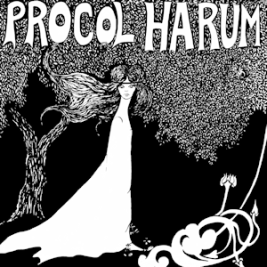 swirling duel between Robin Trower’s guitar and Gary Brooker’s piano, and “Salad Days (Are Here Again)” with Matthew Fisher’s organ front and centre, exemplified the beginnings of the breakaway from the more psychedelic roots laid down by Pink Floyd. The whole thing is then brought to an end on the instrumental “Repent Walpurgis”, which itself wraps with the most thunderous crescendo in rock up to that point, rivaling “A Day In The Life” for the title.
swirling duel between Robin Trower’s guitar and Gary Brooker’s piano, and “Salad Days (Are Here Again)” with Matthew Fisher’s organ front and centre, exemplified the beginnings of the breakaway from the more psychedelic roots laid down by Pink Floyd. The whole thing is then brought to an end on the instrumental “Repent Walpurgis”, which itself wraps with the most thunderous crescendo in rock up to that point, rivaling “A Day In The Life” for the title.
The Doors’ second album, Strange Days, continued Jim Morrison’s exploration of darker themes and disillusionment. Recorded just before the Summer of Love and released in its dying days, it fell in with the vibe of that season while seemingly recognizing its inevitable demise: “Love Me Two Times” tells of a young man’s imminent departure from his love (for Vietnam, the band asserted at the time), and to some radio markets that refused to play it, offers a paean to multiple orgasms. No darker moment, perhaps, than on “When The Music’s Over”, with its rejection of traditional social mores (“cancel my subscription to the Resurrection”) over the damage done, and its embrace of love/hedonism (“we want the world and we want it now”).
Even the ever-constant, whimsical Kinks got into the psychedelia act to a degree with “Lazy Old Sun” from their 1967 release Something Else. “Harry Rag” is ostensibly an ode to cigarettes (being Cockney slang for “fag”), though given the times, the evident ability of the titular item to soothe the song’s many enumerated ills, and a cheeky reference to Tom’s mum “pushing up the grass”, one might fairly wonder if that’s all they meant. 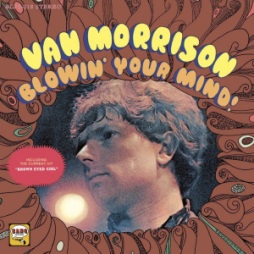 Meanwhile, Van Morrison’s Blowin’ Your Mind! was released by his record company despite the singer’s objections, complete with its sweaty-artist-in-the-middle-of-a-psychedelic-pile-of-shit album cover design. The disc was nothing to do with psychedelia whatsoever, really Morrison’s brand of rock n’ roll mixed with blue-eyed soul, with which he would shortly produce a string of classics. Ahh well… at least the album included “Brown-Eyed Girl”, the inclusion of which makes sense given the aforementioned cover design.
Meanwhile, Van Morrison’s Blowin’ Your Mind! was released by his record company despite the singer’s objections, complete with its sweaty-artist-in-the-middle-of-a-psychedelic-pile-of-shit album cover design. The disc was nothing to do with psychedelia whatsoever, really Morrison’s brand of rock n’ roll mixed with blue-eyed soul, with which he would shortly produce a string of classics. Ahh well… at least the album included “Brown-Eyed Girl”, the inclusion of which makes sense given the aforementioned cover design.
Crusade by John Mayall and the Bluesbreakers continued the band’s tradition of acting as launching pad for late 60s English rock stars, this time with the addition of Mick Taylor prior to his departure for the Rolling Stones and, on a few tracks, Mick Fleetwood. The album was once again a highly competent collection of mostly blues standards, most notably Sonny Boy Williamson’s “Checkin’ Up on My Baby” and Willie Dixon’s “I Can’t Quit You Baby”, which would show up as an early Led Zeppelin staple on their debut two years later.
On Smiley Smile, the Beach Boys continued the sonic experimentation they’d begun on Pet Sounds, producing some truly bizarre results. It certainly never occurred to me that the sound of crunching vegetables in the track of that name could serve as percussion, or that the Boys’ harmonies could be augmented much by giving them the Chipmunk treatment (“She’s Goin’ Bald”); Mike Love later admitted that they were all high at the time, so there’s that (certainly explains “Wind Chimes”). And hey, throw in “Good Vibrations” and it helps make the exercise worthwhile.
Sometimes a musician’s entire body of work is seemingly overshadowed by one grand epic song. This is true of Arlo Guthrie, whose debut Alice’s Restaurant offered the now-famous song of (nearly) the same name as an indictment of the Vietnam draft through the lens of a justice system sending young men off to war to “burn women, kids, houses and villages—after bein’ a litterbug.” It ends in highly satisfying form, mournfully and beautifully, with “Highway in the Wind”.
Safe As Milk, the inaugural offering from Captain Beefheart and his Magic Band, managed to nicely combine several of the prevailing influences on rock music up to the point of its release in September. “Call On Me”‘s jangling guitars conjured up the Byrds with a  smattering of mid-period Beatles sounds, while the blues rained down heavy on “Sure ‘Nuff ‘N’ Yes I Do”, “Zig Zag Wanderer” and “Grown So Ugly”. Then quick dips into psychedelia on “Dropout Boogie” and “Electricity”, blue-eyed soul on “I’m Glad”, and twangy country blues on “Yellow Brick Road”. Aided by a young Ry Cooder, and overlayed with Don Van Vliet’s white Howlin’ Wolf-esque vocals…. highly competent stuff. Like The Velvet Underground and Nico, it was largely ignored popularly at the time both in the US and in Britain, while being regarded today as something of a classic.
smattering of mid-period Beatles sounds, while the blues rained down heavy on “Sure ‘Nuff ‘N’ Yes I Do”, “Zig Zag Wanderer” and “Grown So Ugly”. Then quick dips into psychedelia on “Dropout Boogie” and “Electricity”, blue-eyed soul on “I’m Glad”, and twangy country blues on “Yellow Brick Road”. Aided by a young Ry Cooder, and overlayed with Don Van Vliet’s white Howlin’ Wolf-esque vocals…. highly competent stuff. Like The Velvet Underground and Nico, it was largely ignored popularly at the time both in the US and in Britain, while being regarded today as something of a classic.
Ten Years After, who would later make a splash at Woodstock, released their debut in October, a skillful if fairly straightforward collection of electric blues covers including “Spoonful”, following in Cream’s tracks. Meanwhile, Buffalo Springfield Again was recorded during a fractious time for a band that was beset with infighting and drug charges, foreshadowing the end of the Summer of Love itself and the short lived movement’s decline in the face of the simultaneous rise of harder drugs, increased radicalism and more heavy-handed governmental reaction. Indeed, the album as a whole plugs into something sonically darker and more foreboding, with songs like “Bluebird” and “Expecting to Fly” expressing interpersonal love lost and, seemingly, the loss of something much larger. And “Broken Arro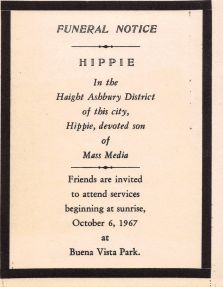 w”‘s self-referential tale of hopelessness bookends the album, a Neil Young track composed and performed by Young alone, without the other band members.
w”‘s self-referential tale of hopelessness bookends the album, a Neil Young track composed and performed by Young alone, without the other band members.
As if acknowledging the change-upon-change, October 6 saw a staged ceremony in San Francisco entitled “The Death of the Hippie”, the ostensible message of which was, in the words of organizer Mary Kasper, that “this was the end of it, to stay wh
ere you are, bring the revolution to where you live and don’t come here because it’s over and done with.” As it turned out, this would prove to be prophetic.
Cream’s Disraeli Gears saw Clapton and company veer away from the electric blues they’d faithfully churned out on Fresh Cream and produce a psychedelic masterpiece. “Tales of Brave Ulysses” suggests Leonard Cohen’s poem (next month to become a song) “Suzanne”, while tracks like “We’re Going Wrong” and “Strange Brew” presage the coming end of the hope and change exemplified by ’66-’67 up to that point. Which sentiment pe rsists throughout the album, right up to (but not including) the closing track “Mother’s Lament”, a goofy decidedly Who-esque British drinking song seemingly out of left field.
rsists throughout the album, right up to (but not including) the closing track “Mother’s Lament”, a goofy decidedly Who-esque British drinking song seemingly out of left field.
Magical Mystery Tour, incorporating the soundtrack to the Beatles’ critically reviled movie of the same name, pulled off the unlikely feat of being a bloody solid album all on its own despite being a double EP in its country of original release and thus not even officially part of the band’s “album catalogue”. It represented their most comprehensive exploration of psychedelia (“Blue Jay Way”, “I Am The Walrus”, “Strawberry Fields Forever”), one of the most beautiful melodies they ever committed to vinyl (“The Fool on the Hill”), and their purest plea for understanding in the midst of the coming governmental backlash against the peace and social change movements (album ender “All You Need Is Love”). Hell, they even paused for a sec to spark their own bit of mystery and controversy that would feel right at home today as an Internet meme by maybe, maybe not letting us know that one of them was dead.
Country Joe and the Fish continued their brand of Vietnam protest rock on I-Feel-Like-I’m-Fixin’-to-Die, amping up the directness even further with the title track and its  exhortation to “be the first ones in your block to have your boy come home in a box.” Organ and Barry “The Fish” Melton’s grungy guitar are on display in “Pat’s Song” and the extended soundscape “Thought Dream” with its plea against nuclear annihilation, and MacDonald includes his second ode to a female fellow musician (this time to “Janis”, his girlfriend at the time).
exhortation to “be the first ones in your block to have your boy come home in a box.” Organ and Barry “The Fish” Melton’s grungy guitar are on display in “Pat’s Song” and the extended soundscape “Thought Dream” with its plea against nuclear annihilation, and MacDonald includes his second ode to a female fellow musician (this time to “Janis”, his girlfriend at the time).
Love’s November offering, Forever Changes, marked a shift for the band towards more folk inspired sounds, and a leap forward in terms of their songwriting and composition. While the disc fits neatly among the others to emerge from the Summer of Love, its lyrics reflect much more disillusionment than its music would suggest, particularly on its most popularly recognizable track, “Alone Again Or”. Sadly the success of the album came at the expense of the band itself, which disintegrated shortly after and were reborn, Animals-style, as a succession of musical troupes fronted by Arthur Lee. But hey…. when you’re enough of a pioneer to feature the word “snot” so prominently in a notable album release (on “Live and Let Live”) and mix it up with a funky guitar solo, that’s something. And the rock commentariat clearly agree, having repeatedly included the album in the top segment of best-of-all-time lists for decades now.
Okay, okay, I get it. The Moody Blues co-invented prog rock. And they could clearly write and play music, certainly far better than, say, me. But my God, is Days of Future Passed a dreary and dull affair. It’s true that it included their most famous song, “Nights In White Satin”, and I have no issue with slow songs as a matter of principle, but the song isn’t done any favours by sticking it at the end of a load of droning pretension.
With After Bathing At Baxter’s, Jefferson Airplane continued their reign as co-voice of the Summer of Love. “Wild Tyme” ditched the psychedelia for a more pure form of distorted guitar rock, with its references to change all around, while “The Last Wall of the Castle” takes a similar approach at a faster tempo while pleading to be taught how to love. The titular trip (“Baxter” was supposedly the band’s code for acid) is on full display on “Spare Chaynge”, as is the obligatory mock-artsy weird sonic jumble on “A Small Package of Value Will Come to You, Shortly”.
If there’s one undeniable truth about the Monkees’ fourth album Pisces, Aquarius, Capricorn  & Jones Ltd., it’s that it represented a step forward for the band, both in terms of their musical ability (if not yet their songwriting) and variety. Generous use of the then-state-of-the-art Moog synthesizer gave the album a sound borrowing elements from psychedelia without straying too far from their pop roots.
& Jones Ltd., it’s that it represented a step forward for the band, both in terms of their musical ability (if not yet their songwriting) and variety. Generous use of the then-state-of-the-art Moog synthesizer gave the album a sound borrowing elements from psychedelia without straying too far from their pop roots.
The Amboy Dukes’ self titled debut, with then-part-time lunatic Ted Nugent on lead guitar and J.B. Drake serving up lead vocals like a baritone Mick Jagger, kicked off with covers of Big Joe Williams’ “Baby Please Don’t Go” and Cream’s “I Feel Free”, both well-executed, slightly heavier versions of the originals. Then a cover of “Let’s Go Get Stoned” at the halfway mark, a bit incongruous perhaps in light of Nugent’s later socio-political stance on such things. Most of the rest are original compositions, nicely showing off the band’s competent, most Them-esque garage rock sound; notably, “Colors” offers a snippet of the lyrics from “My Country ‘Tis Of Thee” before a burst of guitar squawk from Nugent. Not quite a pre-Hendrix pre-“Star Spangled Banner”, but perhaps a harbinger of things to come.
On Easter Everywhere, the 13th Floor Elevators continued to churn out their skillful, electric jug-infused psychedelia. Byrds-esque vocals were in abundance on “She Lives (In a Time of Her Own)” and “Nobody To Love”. It’s difficult to think of a psychedelic rock band with such a canny sense of timing and precision; man, these guys were tight. On their cover of Bob Dylan’s “(It’s All Over Now) Baby Blue”, Stacy Sutherland’s jangling, echo-infused guitar tone predicts that of The Edge nearly a quarter century later. At the same time, the Hollies’ Butterfly marked their last with Graham Nash for many years, as he departed to co-establish Crosby, Stills & Nash. The psychedelia is on full display, with the obligatory sitar (“Maker”) and Beatles-ish echo-laden vocals and violins (“Would You Believe”). In fact, the band in its final effort with Nash certainly aped the Fab Four, particularly on “Step Inside”, “Elevated Observations”, and the invitation-to-drop-acid “Try It” describing a means of visiting the astral plane.
As with the same month the previous year, December ’67 saw a slew of monumental album releases. Coincidence? Saving up the best stuff for the Christmas season? Probably. Or we’ll probably never know.
The Stones, fresh from the success of Between the Buttons, decided this time around to imitate the Beatles rather shamelessly, in composition and appearance, with Their Satanic  Majesties Request, their only real foray into psychedelia before returning to the blues rock at which they excelled. There’s some valiant efforts here, including the obligatory plea for universal understanding on “Sing This All Together”, which then goes off the rails a few tracks later on its eight-minute attempted soundscape version “(See What Happens)” and its swoopy, ultimately pointless search for profundity in the mire. The rails are regained on “She’s A Rainbow”, a track whose value is most appreciable via the realization that it doesn’t need its violins (no slag on session arranger John Paul Jones) or trippy sound effects in order to be good. I’ve never been a fan of “2,000 Light Years From Home”, which sounds like an attempt at a Pink Floyd song by a band that wasn’t Floyd, never was Floyd, and never needed to try to be Floyd. And “On With The Show” feels like an all-too-obvious attempt at a Stonesy “Sgt. Pepper’s Lonely Hearts Club Band (Reprise)”. Maybe ending albums with a reference to the album as performance set to English music hall sounds was momentarily seen as the next big thing? Doesn’t matter anyway; mired as they were at that point in drug charges, the Stones had been off the road for six months and wouldn’t return to it for nearly two more years, wisely riding out their troubles until they’d indisputably re-established themselves musically and just in time to play their role in the Sixties’ Götterdämmerung.
Majesties Request, their only real foray into psychedelia before returning to the blues rock at which they excelled. There’s some valiant efforts here, including the obligatory plea for universal understanding on “Sing This All Together”, which then goes off the rails a few tracks later on its eight-minute attempted soundscape version “(See What Happens)” and its swoopy, ultimately pointless search for profundity in the mire. The rails are regained on “She’s A Rainbow”, a track whose value is most appreciable via the realization that it doesn’t need its violins (no slag on session arranger John Paul Jones) or trippy sound effects in order to be good. I’ve never been a fan of “2,000 Light Years From Home”, which sounds like an attempt at a Pink Floyd song by a band that wasn’t Floyd, never was Floyd, and never needed to try to be Floyd. And “On With The Show” feels like an all-too-obvious attempt at a Stonesy “Sgt. Pepper’s Lonely Hearts Club Band (Reprise)”. Maybe ending albums with a reference to the album as performance set to English music hall sounds was momentarily seen as the next big thing? Doesn’t matter anyway; mired as they were at that point in drug charges, the Stones had been off the road for six months and wouldn’t return to it for nearly two more years, wisely riding out their troubles until they’d indisputably re-established themselves musically and just in time to play their role in the Sixties’ Götterdämmerung.
The Who Sell Out pushed further the developing notion of the concept album that they’d explored on a small scale on their prior release. Sell Out was formatted as a series of unrelated songs united by fake commercials about real products (which sparked a  minor legal kerfuffle), ostensibly as a broadcast from pirate radio station Radio London, which had only recently been successfully shut down by the British government. Given the affection between pirate radio and the mod subculture that formed much of The Who’s early fan base, the album can be seen as a 38-minute protest. Within it, “Mary Ann with the Shaky Hand” offered an ode to handjobs. Most notable is its inclusion of “I Can See For Miles”, the band’s biggest ever US single and generally regarded as one of their best songs. It’s not fully clear where its appeal lies; perhaps it’s another “House of the Rising Sun”-esque dark, paranoid hit. Popular legend claims that Paul McCartney read a review describing “Miles” as the heaviest song ever, which inspired him — having never actually heard the song — to write and record the even heavier “Helter Skelter” the following year. Both have thus been cited as ancestors of the as-yet embryonic heavy metal genre, and the latter track would have an ominous impact on the trajectory of Sixties culture within just over a year and a half.
minor legal kerfuffle), ostensibly as a broadcast from pirate radio station Radio London, which had only recently been successfully shut down by the British government. Given the affection between pirate radio and the mod subculture that formed much of The Who’s early fan base, the album can be seen as a 38-minute protest. Within it, “Mary Ann with the Shaky Hand” offered an ode to handjobs. Most notable is its inclusion of “I Can See For Miles”, the band’s biggest ever US single and generally regarded as one of their best songs. It’s not fully clear where its appeal lies; perhaps it’s another “House of the Rising Sun”-esque dark, paranoid hit. Popular legend claims that Paul McCartney read a review describing “Miles” as the heaviest song ever, which inspired him — having never actually heard the song — to write and record the even heavier “Helter Skelter” the following year. Both have thus been cited as ancestors of the as-yet embryonic heavy metal genre, and the latter track would have an ominous impact on the trajectory of Sixties culture within just over a year and a half.
December also saw the release of two folk albums from either side of the 49th parallel that would cast long shadows. John Wesley Harding marked Bob Dylan’s return to his acoustic roots after several albums spent experimenting with electric rock, an oddly countercultural response to the counterculture already at its highest point of prominence. Dylan’s interest in Christian themes was coming to the fore, perhaps most famously in “All Along The Watchtower”, soon to be dramatically electrified by Jimi Hendrix. “The Ballad of Frankie Lee and Judas Priest” tells a story of temptation, with its warning against “mistaking Paradise for that home across the road”. As an aside, the song would also inspire the name of a foundational British heavy metal band a few years later. Meanwhile 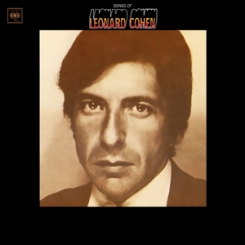 in Canada, Songs of Leonard Cohen marked the recording debut of the acclaimed poet and novelist and went on to great retrospective (if not necessarily contemporary) critical acclaim. Cohen’s voice, which would remain an incessantly mournful baritone until descending into his trademark bass in the Eighties, matched perfectly his songs of love and loss, most notably the oft-covered “Suzanne”, “Sisters of Mercy”, and “So Long, Marianne” (the latter of whose muse passed away this year in early August). Despite the aforementioned esteem in which his work has long been held, it wouldn’t be until the Nineties that Cohen’s music became widely regarded as a salable commodity.
in Canada, Songs of Leonard Cohen marked the recording debut of the acclaimed poet and novelist and went on to great retrospective (if not necessarily contemporary) critical acclaim. Cohen’s voice, which would remain an incessantly mournful baritone until descending into his trademark bass in the Eighties, matched perfectly his songs of love and loss, most notably the oft-covered “Suzanne”, “Sisters of Mercy”, and “So Long, Marianne” (the latter of whose muse passed away this year in early August). Despite the aforementioned esteem in which his work has long been held, it wouldn’t be until the Nineties that Cohen’s music became widely regarded as a salable commodity.
The Jimi Hendrix Experience’s “Axis: Bold As Love” represented the band’s expanding proficiency with the recording process, such that few of its songs were ever performed live due to complexity. The bizarre flying-saucer-and-feedback intro “Exp” leads into the subdued, bluesy “Up From the Skies” before the much more explicitly Hendrixian “Spanish Castle Magic”. “If 6 Were 9”, the album’s longest and most famous track, is a blatant bit of defiance overlaid with guitar pyrotechnics in which Hendrix inspires Led Zeppelin’s “Thank You” in the opening verse, rails against conformity and white collar conservatives “pointing their plastic finger at me”, and a moment later coins the expression “freak flag”. Bassist Noel Redding gets lead vocals on “She’s So Fine”, resulting in a decidedly Who-esque harmonic blast with Hendrix’s thousand-note flurries filling in for Pete Townshend’s power chords. The album ends with “Bold As Love”, a psychedelic exploration of the emotion of colours with a small nod to Donovan.
Harry Nilsson released his second album, Pandemonium Shadow Show, to critical acclaim but muted public attention. Indeed, its chief impact was on other musicians who spoke its praises; John Lennon and Paul McCartney would both name check Nilsson as their favourite American artist at their 1968 press conference announcing the formation of Apple Corps. With its varied, eccentric compositions and Nilsson’s vocal talents (prominently displayed on his cover of Phil Spector composition “River Deep – Mountain High”), the album proved to be the springboard for his later career.
Perhaps no band more exemplified “psychedelic pop” (as opposed to psychedelic rock) than Strawberry Alarm Clock. Their debut album Incense and Peppermints spawned one of  the era’s most recognizable flower power anthems in the form of the title track, but with some soaring vocal harmonics, organ and decent guitar, the album reached further than that one song. There’s some very hippy-dippy stuff on display on a few tracks (“Strawberries Mean Love”, “Rainy Day Mushroom Pillow”), but Ed King blasts out some impressive guitar skills on “Lose to Live” and you’re reminded that these guys were actually pretty good musicians. “The World’s On Fire” may have been trying to copy The Doors’ “Light My Fire” a bit too closely, right down to the extended instrumental break in the middle, but as a warning about the iffy state of the world at that time, it was well-executed. And, being an album from 1967, clearly it just had to end with the announcement that the show is over on “Unwind With the Clock”.
the era’s most recognizable flower power anthems in the form of the title track, but with some soaring vocal harmonics, organ and decent guitar, the album reached further than that one song. There’s some very hippy-dippy stuff on display on a few tracks (“Strawberries Mean Love”, “Rainy Day Mushroom Pillow”), but Ed King blasts out some impressive guitar skills on “Lose to Live” and you’re reminded that these guys were actually pretty good musicians. “The World’s On Fire” may have been trying to copy The Doors’ “Light My Fire” a bit too closely, right down to the extended instrumental break in the middle, but as a warning about the iffy state of the world at that time, it was well-executed. And, being an album from 1967, clearly it just had to end with the announcement that the show is over on “Unwind With the Clock”.
Listening to Incense and Peppermints back to back with Traffic’s debut Mr. Fantasy underscores effectively the distinction between psychedelic pop and psychedelic rock, respectively. The latter managed to be eclectic while avoiding both the absurdity of Their Satanic Majesties Request and the pretension of Days of Future Passed, with “Dear Mr. Fantasy” a particular standout with its mournful lyric and grungy, overdriven guitar courtesy of legendary session musician and songwriter Dave Mason. Sitar shows up on “Utterly Simple” and flute on “Hope I Never Find Me There”, yet these don’t overwhelm the songs or drag them into parody or very far into unoriginality. And “Dealer” marks one of rock’s early bits of condemnation of the conniving, amoral, rapacious dope pusher, whose influence the rock elite would decry while still consuming the nefarious wares. Clearly the counterculture was starting to feel the pull of intoxicants much more powerful than herb and hallucinogens.
And then the Paul Butterfield Blues Band’s third album, The Resurrection of Pigboy Crabshaw, which is more pure blues with a nod to psychedelia. The sound on their third outing is more sophisticated, with the addition of a horn section that adds a noticeably  jazzy vibe. Their covers of “Born Under a Bad Sign” and Otis Rush’s “Double Trouble” are particularly notable examples of their maturation. Overall, another powerhouse outing from the era’s resident white American masters of the electric blues.
jazzy vibe. Their covers of “Born Under a Bad Sign” and Otis Rush’s “Double Trouble” are particularly notable examples of their maturation. Overall, another powerhouse outing from the era’s resident white American masters of the electric blues.
The Beach Boys finished out the year with Wild Honey, a move away from both psychedelia and, to a large measure, the multi-part harmonies that had long been their trademark. The album also largely eschewed rock n’ roll for a blue-eyed soul sound. Not really a response to the times, but supposedly a reaction to two albums’ worth of experimental complexity and innovation. Meanwhile, Donovan’s A Gift From a Flower to a Garden represented his own newfound anti-drug stance, at least as evidenced by the liner notes, and his embrace of spirituality and meditation as a better alternative. “The Land of Doesn’t Have To Be” exemplifies his new perspective (born supposedly from his own marijuana arrest and the descent of friends into the grip of stronger stuff), observing of the titular land that “few people get there quick by their chosen road/ they don’t know it’s quicker to go/ by natural velocity.” A double album, the first half was Donovan’s usual brand of folk rock, while the second disc was subtitled For Little Ones, a collection of acoustic children’s songs.
The Sonics, skillful purveyors of loud garage rock, ended 1967 with their oddly titled third album Introducing The Sonics. While Gerry Roslie continued to impress with his vocal 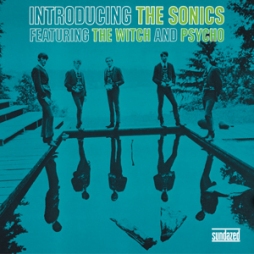 rawness and power, overall the album paints the band as something of a spent force, with most tracks (“The Witch” and “Psycho” being exceptions) lacking the “oomph” that had made 1966’s Boom such a great, grungy listen. For whatever reason, the Sonics didn’t evolve with the times on this outing as so many of their contemporaries did (even the album cover seems hopelessly mired in 1966), and what might have sounded fresh and exciting at the time of Boom nearly two years earlier comes off sadly like the work of a band that got left behind when listened to in context. The original band members clearly agreed that they were past their expiry date as a group; not too long after the album’s release they had all left, and the band would continue to limp along in various guises afterwards without releasing new material until 1980. Given what was to come only a month later in January 1968, their demise was a truly unfortunate case of what might have been.
rawness and power, overall the album paints the band as something of a spent force, with most tracks (“The Witch” and “Psycho” being exceptions) lacking the “oomph” that had made 1966’s Boom such a great, grungy listen. For whatever reason, the Sonics didn’t evolve with the times on this outing as so many of their contemporaries did (even the album cover seems hopelessly mired in 1966), and what might have sounded fresh and exciting at the time of Boom nearly two years earlier comes off sadly like the work of a band that got left behind when listened to in context. The original band members clearly agreed that they were past their expiry date as a group; not too long after the album’s release they had all left, and the band would continue to limp along in various guises afterwards without releasing new material until 1980. Given what was to come only a month later in January 1968, their demise was a truly unfortunate case of what might have been.
In hindsight, 1967 was a combination of genuine profundity as a reaction to the surrounding change, laced with failed attempts at profundity. But perhaps that’s exactly what one would have expected to happen, since trying to be profound ends up looking mock-intellectual and pretentious as often as not (he said, not at all self-referentially…). But whatever the case, by December the times were indeed a-changin’, though perhaps much faster and in much different directions than Bob Dylan had in mind in 1964. The Vietnam conflict was escalating and with it the counterculture’s reaction and the establishment’s pushback, and with exemplars like Jim Morrison’s arrest on charges of inciting a riot in New Haven, Connecticut on December 9, the short-lived age of Flower Power was coming to a close. 1968 would be barely recognizable by comparison.
Reblogged this on Words For Reveries and commented:
Part II
LikeLike